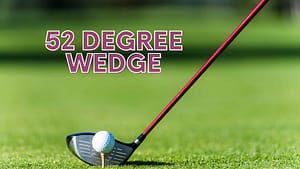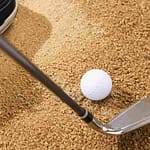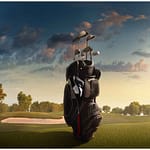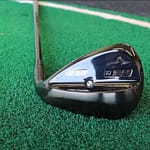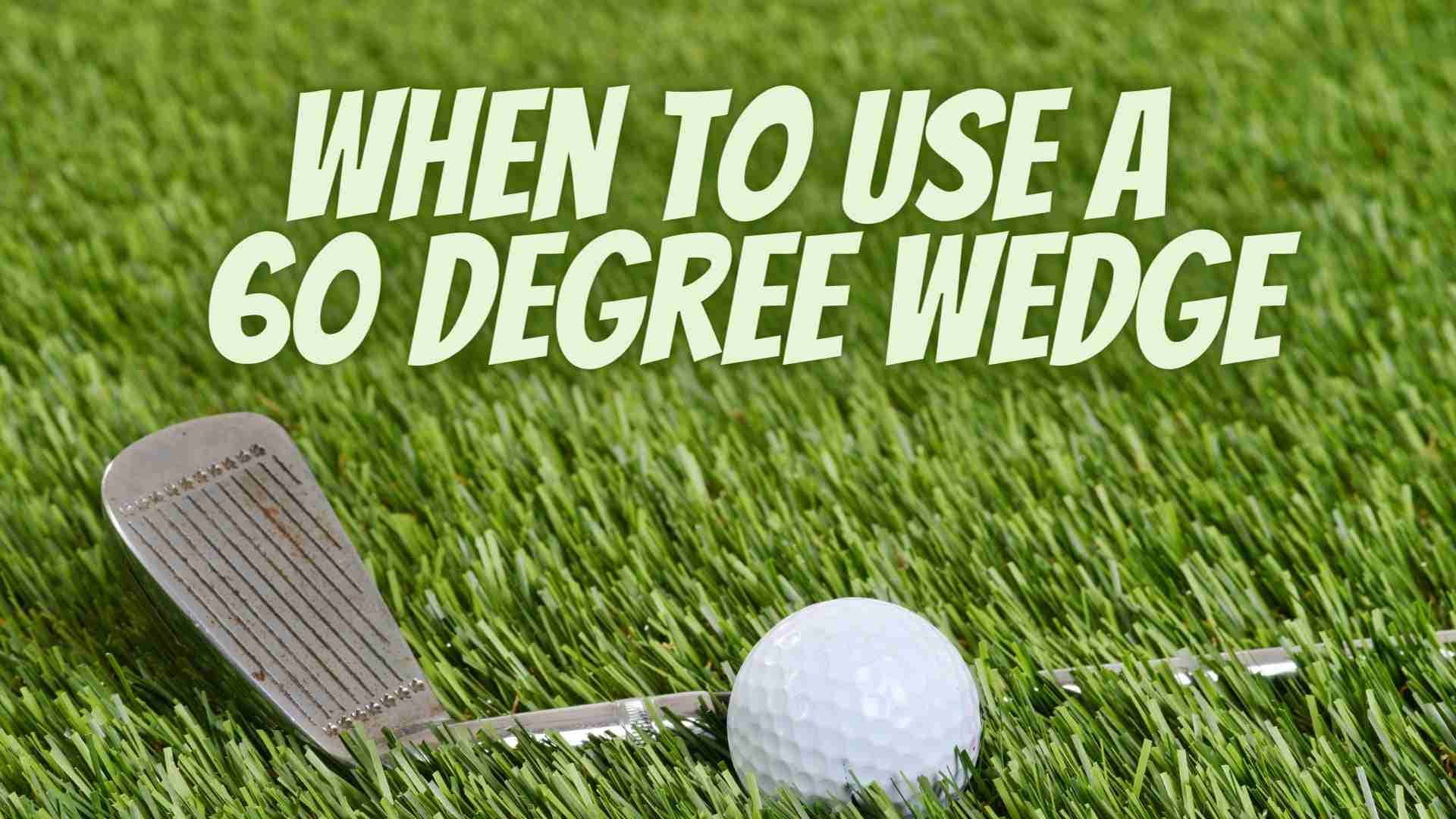
Are you curious about the optimal situations for employing a 60 degree wedge on the course? Look no further. In this comprehensive guide, we will be providing you with valuable insights to enhance your scoring opportunities and finesse around the greens.
Imagine confidently executing those high, soft shots that land with pinpoint precision and stop quickly, leaving you with shorter putts and lower scores.
Whether you’re a seasoned golfer or a budding enthusiast, understanding how and when to use a 60 degree wedge can make all the difference in your game.
Through a careful examination of various experiments and shot techniques, we unlock the secrets to maximize the potential of this versatile club. From short-sided shots and delicate flop shots to navigating bunkers and chipping with finesse, we cover it all.
By the end of this article, you’ll have a solid understanding of when and how to leverage the power of the 60 degree golf wedge to elevate your short game. So, let’s tee off into the world of the 60 degree golf club and discover its hidden potential.
Understanding the 60 Degree Lob Wedge
Before we dive into the specifics, let’s take a moment to understand the importance of wedges in golf. Wedges are specially designed to handle shots that require precision, finesse, and a high level of control.
They come in various degrees of loft, allowing golfers to hit the ball at different angles and distances. Among the range of wedges available, the 60 degree wedge holds a unique position due to its loft angle and versatility in certain situations
What is a 60 Degree Wedge?
A 60 degree wedge is commonly referred to as a “lob wedge” due to its high loft angle and its ability to hit high, soft shots with a steep descent. It is also sometimes simply called a “60 degree wedge” or a “60-degree lob wedge.”
What Degree Is A Lob Wedge?
A lob wedge degree is typically designed with a loft angle ranging from 58 to 60 degrees. This high degree of wedge loft allows for a high trajectory and short distance, making a lob wedge ideal for hitting shots with a steep angle and soft landing around the green. The extra lob wedge degree helps golfers execute delicate shots, such as flop shots, bunker shots, and precise short pitches.
When To Use A 60 Degree Wedge
There are specific scenarios and shot situations where the 60 degree wedge truly excels. By understanding these situations, you can make informed decisions on what is a 60 degree wedge used for.
Here’s a more detailed explanation of each shot and when to use a lob wedge and how it can help in executing them effectively:
Short-Sided Shots
When faced with a short-sided shot, where your ball is near the green but with limited green to work with a 60 degree lob wedge becomes invaluable. The high loft of the club allows you to launch the ball high in the air, generating a steep descent angle.
This helps you clear any obstacles in your path, such as rough or bunkers, and land the ball softly on the green. The 60 degree golf club provides the necessary loft and controls to execute these delicate shots with precision.
Flop Shots
The best lob wedge is renowned for its ability to execute flop shots. A flop shot is a high, soft shot typically used when you need to hit the ball over an obstacle or land it close to the pin with minimal roll.
The 60 degree golf wedge’s loft allows you to open the clubface, exposing more of the club’s bounce, which helps you slide the club smoothly under the ball. By employing a shallow swing with an open clubface, you can achieve the necessary loft and height to execute a successful flop shot.
Bunker Shots
Bunker shots require a combination of technique and the right equipment, and a 60 degree club is a go-to club for these situations. The high loft of the wedge helps you generate a steep angle of attack, allowing the club to effectively interact with the sand.
The bounce on the sole of the club prevents it from digging too deeply into the sand, enabling you to slide the club underneath the ball. This helps you escape the bunker by hitting the ball high and soft, with enough spin to stop it on the green.
Precision Shots
In situations where precision and stopping power are essential, the 60 degree wedge proves its worth. When faced with a tight pin placement or a short par-3, you need to land the ball softly and stop it quickly.
The 60 degree wedge’s high loft and steep descent angle allows you to hit high shots that descend steeply upon landing, reducing roll and increasing the chances of the ball stopping close to its landing spot. This level of control is crucial for scoring well and avoiding costly mistakes.
Greenside Chipping
Chipping with a best 60 degree wedge can be advantageous when you need to carry the ball over a fringe or rough onto the green and land it softly.
The loft of the club helps you achieve the necessary trajectory to clear these obstacles, while the steep descent angle ensures the ball lands softly and stops quickly.
By using a slight hinge and hold technique, you can impart spin on the golf ball for distance, allowing for greater control and precision when executing greenside chips.
How To Chip With A 60 Degree Wedge?
Chipping with a 60 degree wedge can be useful when you need to carry the ball over a short distance onto the green and have it land softly. Here’s a step-by-step guide on how to chip effectively with a 60 degree wedge:
- Assess the Situation: Evaluate the lie of the ball and the conditions around the green, including the length of the grass, any obstacles, and the distance to the pin.
- Club Selection: If you decide to use the 60 degree wedge for chipping, ensure you have a comfortable grip on the club. Position your hands slightly ahead of the ball to promote a downward strike and crisp contact.
- Stance and Setup: Adopt a narrow stance with your feet close together. Place the ball slightly back in your stance, closer to your trailing foot (for right-handed golfers, this is the right foot). This promotes a steeper angle of attack and helps you strike the ball first.
- Alignment and Target: Aim the clubface square to your intended target. Align your body parallel to the target line and ensure your feet, hips, and shoulders are aligned with the target or slightly left (for right-handed golfers).
- Swing Technique: Keep your wrists firm and minimize excessive movement. Use a pendulum-like motion with your shoulders and arms to create a smooth and controlled swing. Focus on making clean contact with the ball, aiming to strike it just above the turf.
- Ball Flight and Trajectory: With a 60 degree wedge, you can expect a higher ball flight and a soft landing. To achieve this, focus on making a descending strike on the ball, ensuring that the clubface remains square at impact. This will help generate the necessary height and spin for the ball to stop quickly upon landing.
Remember, every chip shot is unique, and the key to success lies in adapting to the specific situation. Experiment with different techniques, trajectories, and landing spots to find what works best for you.
Do You Need A 60 Degree Wedge?
The need for a 60 degree wedge depends on your playing style and skill level, while a 60 degree wedge can be a valuable club in a golfer’s bag, it is not a necessity for every player.
Here are a few things to consider when determining if you need a 60 degree wedge:
Skill Level
If you are a Higher skilled who has developed a strong short game and possesses good touch and control around the greens then you can benefit from a 60 degree wedge. It offers them additional versatility and shot options for executing high, soft shots, and delicate shots around the green.
Course Conditions
If you frequently encounter tight pin placements, deep bunkers, or undulating greens, a 60 degree wedge can be helpful in navigating these challenging situations.
Playing Style
If you often find yourself in situations where a high, soft shot is required, such as short-sided shots or flop shots, a 60 degree wedge can provide the necessary loft and control to execute those shots effectively.
If you’re a beginner or have not yet developed a consistent short game, focusing on mastering your pitching and chipping with lower lofted wedges (such as a pitching wedge or sand wedge) may be more beneficial initially.
FAQS About 60 Degree Lob Wedges
What is a 60 degree wedge for?
A 60 degree wedge is designed to hit high, soft shots with a steep descent. It is commonly used for short-sided shots, flop shots, bunker shots, and situations that require precision and stopping power around the green.
Do high handicappers need a 60 degree wedge?
While a 60 degree wedge can be beneficial for high handicappers, its usage depends on individual skill level and preference. It requires practice to master the necessary techniques and control. It is recommended to consult with a golf professional to determine if it suits your game.
Do any pros use a 60 degree wedge?
Yes, many professional golfers use a 60 degree wedge. It is a versatile club that allows them to execute a variety of shots around the green with precision and control. Pros often rely on the 60 degree wedge to tackle challenging pin positions and difficult short game situations.
Can you full swing a 60 degree wedge?
Yes, it is possible to make a full swing with a 60 degree wedge, but it is generally used for shorter shots around the green. Full swings with a 60 degree wedge are typically limited to specific situations that require a high trajectory with a short carry distance.
Is it better to chip with a 56 or 60-degree wedge?
The choice between a 56 degree and a 60 degree wedge for chipping depends on personal preference and the specific shot requirements. A 56 degree wedge offers a slightly lower trajectory, while a 60 degree wedge provides more loft. It is recommended to practice with both and see which club suits your chipping style and produces the desired results.
Conclusion: When To Use A 60 Degree Lob Wedge
The 60 degree wedge, also known as a lob wedge, offers golfers the ability to hit high, soft shots with a steep descent. It excels in short-sided shots, flop shots, bunker shots, and situations that demand precision and stopping power around the green. By mastering the proper techniques you can effectively utilize the 60 degree wedge to enhance their short game performance.
Overall, the 60 degree wedge excels in providing the necessary loft, control, and stopping power for a variety of shots around the green. Its high loft and steep descent angle enables you to hit high, soft shots that land and stop quickly, minimizing roll.
So, the next time you find yourself facing a short-sided pin, needing a high, soft shot, or looking to escape a bunker with finesse, reach for your trusty 60 degree wedge. Embrace its loft, control, and stopping power to make precision shots and lower your scores. Practice, experiment, and enjoy the journey of mastering this remarkable club.

